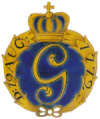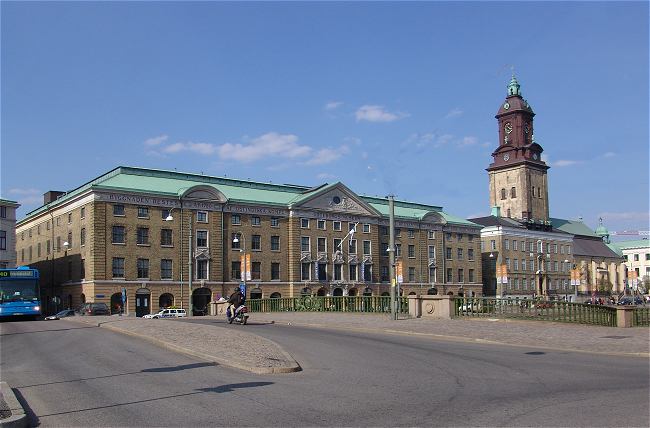

By Kristina Söderpalm
The City Museum of Gothenburg [Göteborgs Stadsmuseum] is among the oldest and largest museums in Sweden dealing with cultural history. It originates from Gothenburg Museum [Göteborgs Museum], which opened in 1861. Like its forerunner, it is situated at the Grand Harbor Canal in the former headquarters of the Swedish East India Company, erected in the 1750s. Today it is one of the foremost monuments of the city. In the 1890s the building was renewed, and a fourth wing with galleries was erected. A hundred years later it was time for modernizing. The halls from the time of the East India Company were restored and new facilities, such a large lobby and auditorium, were added.
Besides many temporary exhibitions on various subjects, more permanent exhibitions are concentrated on the history of Gothenburg and its surrounding region. One of the latter, in connection to the reconstructed auction room, is devoted to the Swedish East India Company (SOIC) 1731-1813 and its artifacts. Among the highlights are a portrait of the main promoter of the company Colin Campbell (1789-57), his diary from the SOIC's first expedition 1732-33, porcelain salvaged from the ship Gothenburg I, wrecked in 1745, a scroll painting of Canton's factory town c.1775, a reverse portrait of a merchant (Phuankhequa?) c. 1780, a suite of four oil paintings of Macao and Boca Tigris and other places along the Pearl River, a pair of large painted clay mannequins, a contemporary waterline-model of the ship Gothenburg II, which foundered in Table Bay in 1786. In the "porcelain vault," typical items of the company's porcelain import for the European market are on display. The focus is on made-to-order porcelain for the Swedes; among others exhibits, is a selection of about 250 pieces of the museum's collection of armorial porcelain.
The sea trade of the SOIC lasted from 1732 to 1806, divided on four charter periods. A total of 132 ships were outfitted; most of them had Canton, China as destination intended destination, but 19 were destined for harbors in the Indian Ocean or other port-of-calls on the route to China. Eight ships were wrecked, five of which were on their outward voyage. The main imports were tea, but porcelain seems to have been more important in the return cargoes than for the contemporary Asiatic companies in Europe. The trade culminated during the third charter 1766-86. In the beginning every expedition of one or more ships was financed by subscription, but from 1753 the company was organized as a joint-stock company. The main profit was in re-export to other European countries. Large private fortunes were made on the East India trade and parts of them were invested in projects in benefit of the society. So Sahlgrenska University Hospital [Sahlgrenska Universitets-Sjukhuset] and Chalmers' University of Technology [Chalmers Tekniska Högskola], both in Gothenburg, were named after donors Niclas Sahlgren and William Chalmers, who are respectively, the director of the SOIC 1733-76, and the supercargo for ten years in Canton and later, 1793-1806, director of the SOIC.
Kristina Söderpalm